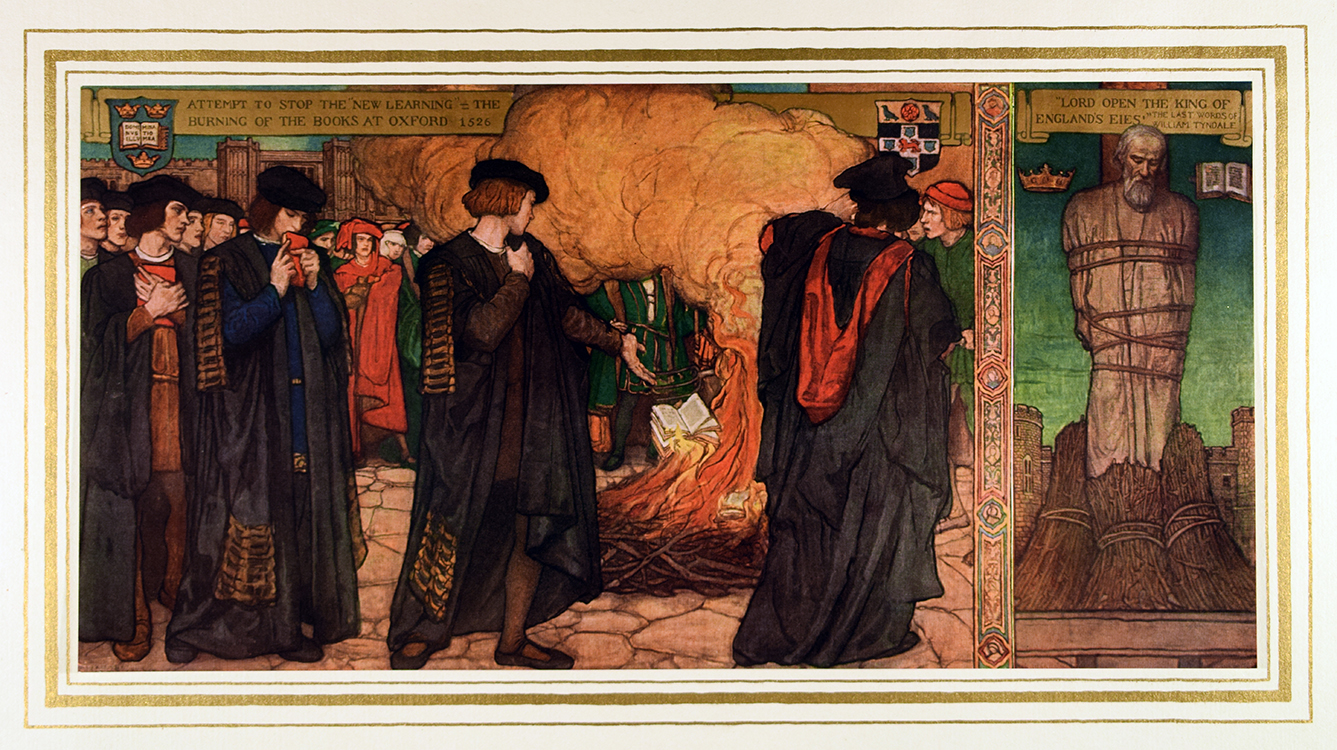The subjects found in this section have their roots in antiquity, and the stories have been told and retold over the centuries. Ancient narratives, including legends of Greece and Rome and the stories of the Old and New Testaments, appeared in Europe in the first printed books of the late Middle Ages. During the earliest decades of the print era, images were added to text exclusively by means of woodcuts. The necessary woodblocks would be put in place as type was being set. Thus, illustration went hand-in-hand with the great diffusion of printed materials brought on by the printing press. In early editions of Homer and Ovid prints helped to bridge the distance between the ancient and modern, and between the real and the imagined. Later, other printmaking techniques such as engraving, lithography and chromolithography allowed for greater detail and more striking color in books and other printed documents.
Ancient myth and religion have nourished much of the literature written since the advent of print. Dante, Milton and others tapped into this vein as part of their creative process. In addition, many of the works in this section reveal recent artists attempting to connect with writers across vast expanses of time. Here we find major twentieth-century artists such as Pablo Picasso and Stanley Hayter visually imagining ideas produced in different eras and cultures. Contemporary artists can draw on both older and more recent printmaking techniques as part of the illustration process.
Author: James Joyce (Irish, 1882-1941)
Illustrator: Henri Matisse (French, 1869-1954)
Ulysses. New York: Limited Editions Club, 1935.
Special Collections
Author: James Joyce (Irish, 1882-1941)
Illustrator: Henri Matisse (French, 1869-1954)
Polyphemus
soft ground etching on paper
This is the first illustrated edition of Joyce’s modernist masterwork. The etchings and lithographs were executed by Henri Matisse, who was asked to produce as many illustrations as he could for $5000. Not having read Joyce’s novel, the artist based his images on Homer’s Odyssey, rather than the work he was actually commissioned to illustrate, which is set in twentieth-century Dublin. Thus, this edition has been referred to as a “quasi-collaboration.” Two illustration techniques are found in this volume. Soft ground etchings reproduce Matisse’s preliminary drawings. Lithographs represent the final versions. Somewhat appropriately, the etching seen here depicts the blinding of the cyclops Polyphemus by the hero Odysseus in Homer’s epic.
Author: James Joyce (Irish, 1882-1941)
Illustrator: Robert Motherwell (American, 1915 – 1991)
Ulysses. San Francisco: Arion Press, 1988.
Special Collections
Author: James Joyce (Irish, 1882-1941)
Illustrator: Robert Motherwell (American, 1915 – 1991)
The Streets
etching on paper
The artist Robert Motherwell discovered Joyce early in his career. In describing his relationship to the author’s best-known novel, Motherwell said, “I found Ulysses at a time when I was searching for the key to a vaguely perceived modernist aesthetic that I knew I had to make my own. Joyce served my purposes then and now.” Motherwell dedicated a number of artworks to Joyce and produced a painting entitled Ulysses. The edition of Joyce’s novel on display here contains forty etchings by the artist, twenty of which are in vivid color.
Author: Publius Ovidius Naso (Rome, 43 B.C. -17/18 A.D.)
Illustrator: anonymous
Translator: anonymous
Le Grand Olympe des Histoires Poétiques du Prince de Poésie Ovide Naso...Paris: Madeleine Boursette, 1543.
Special Collections
Author: Publius Ovidius Naso (Rome, 43 B.C. -17/18 A.D.)
Illustrator: anonymous
Translator: anonymous
The sack of troy, Part III
woodcut on paper
This small volume from sixteenth-century France is based on the poetry of the ancient Roman poet Ovid, best known for The Metamorphosis. That poem recounts stories from classical mythology in which humans and gods change their physical shapes. Interestingly, the woodcuts used to illustrate Le Grand Olympe bear no relation to the tales told in the text. In fact, most of the images are drawn from the story of the Aeneid, the most important epic poem of ancient Rome. The image seen here represents a key moment in the Aeneid, the legendary “sack of Troy,” when that ancient city is attacked by Greek soldiers who have hidden in a horse. One can see the name “Eneas” (the main character of the Aeneid) written above the male figure in the top left of the woodcut. Such erroneous re-use of woodcuts was common during the period when Le Grand Olympe was printed.
Author: Brian Coffey (Irish, 1905 – 1995)
Illustrator: Stanley W. Hayter (British, 1901 – 1988)
Death of Hektor
Guilford, Surrey: Circle Press, 1979. From the library of the author.
Special Collections
Author: Brian Coffey (Irish, 1905 – 1995)
Illustrator: Stanley W. Hayter (British, 1901 – 1988)
Plate VI
etching on paper
This book is a collaboration between well-known Irish poet Brian Coffey and Stanley William Hayter, considered one of the finest printmakers of the twentieth century. Coffey’s poem is inspired by Homer’s ancient epic The Iliad. As the title indicates, Coffey focuses on Hector, the heroic Trojan prince who is slain by the Greek warrior Achilles. Hayter supplied a set of nine large engravings that in some cases include etching techniques. The varied effects make for strking images, although their relationship to the poem is evocative rather than literal. The print on view here is largest of the group.
Author and Illustrator: William Blake (British, 1757-1827)
Jerusalem.
Cobham, Surrey: Published by the Trianon Press for the William Blake Trust, 1951.
Gift of the University of Delaware Library Associates
Special Collections
engraving on paper
Like William Morris (whose work is on display elsewhere in this exhibition), poet and artist William Blake was inspired by book design practices of the Middle Ages. Blake produced a number of illuminated books, centuries after they were common in Europe. Jerusalem is the most extensive of these, with one hundred engraved plates. The poem aims to lead the people of England (“Albion”) back to a true understanding of Christ’s teachings. One can see Blake’s unique aesthetic at work here, with its stylistic integration of image and text. Only a few copies of the original work remain. This carefully produced facsimile is based on the copy found at the Yale Center for British Art.
Illustrators: Joseph Sebastian Klauber (German, 1723 - 1768);
Johann Baptist Klauber (German, 1710 - 1768)
Historiae Biblicae Veteris et Novi Testamenti. Augustae Vindelicorum (Augsburg, Germany): Joseph and Johann Kaluber, ca. 1750?
Special Collections
engraving on paper
This interesting volume is an eighteenth-century picture book, in which a series of engravings illustrate Latin Bible verses. The intended audience was young people.
Author and Illustrator: Jim Dine (American, b. 1935)
The Apocalypse: the Revelation of Saint John the Divine: the Last Book of the New Testament from the King James Version of the Bible, 1611.
San Francisco: Arion Press, 1982.
Illustrator’s and printer’s autograph copy.
Special Collections
woodcut on paper
The Revelation of Saint John is the final book of the Christian New Testament, describing the end of the world (the Apocalypse) and the Last Judgement. To visualize this seminal work, Jim Dine hearkened back to the first technique used to illustrate printed books: the woodcut. The result is a vivid, modern visualization of the text, which also pays homage to the long tradition of artists who have represented scenes from the Apocalypse. The most famous of these is the German Renaissance artist Albrecht Dürer (1471-1528), whose woodcuts based on images from the Apocalypse are considered masterpieces in the history of art and illustration.
Pablo Picasso (Spanish, 1881–1973)
Roger Lacourière (French, 1892–1966), printer
six etchings on paper
From Lysistrata, 1934
Edition 61 of 150
Special Collections
Dr. Charles L. Reese Collection
Pablo Picasso (Spanish, 1881–1973)
Roger Lacourière (French, 1892–1966), printer
Oath of the Women (Le Serment des femmes)
Kinesias and His Family (Cinésias et sa famille)
Kinesias and Myrrhina (Cinésias et Myrrhine)
Two Old Men at the Seashore with a Shovel and a Small Boat (Deux vieux au bord de la mer avec une pelle et une barque)
Pablo Picasso (Spanish, 1881–1973)
Roger Lacourière (French, 1892–1966), printer
Accord Between the Spartan and Athenian Warriors: The Peace (Accord entre les Athéniens et les Spartiates, la paix)
The Feast (Le Banquet)
Author: Aristophanes (Greek, c. 446 - c. 386 BCE)
Translator: Samuel Smith
Illustrator: Aubrey Beardsley (British, 1872 - 1898)
The Lysistrata of Aristophanes: Now first and wholly translated into English and illustrated with eight full- page drawings by Aubrey Beardsley.
First edition. London: [Leonard Smithers], 1896.
Copy 97 of 100
Mark Samuels Lasner Collection
Author: Aristophanes (Greek, c. 446 - c. 386 BCE)
Translator: Samuel Smith
Illustrator: Aubrey Beardsley (British, 1872 - 1898)
Lysistrata Haranguing the Athenian Women
line block print on paper
Aubrey Beardsley used the sexually charged narrative of the Lysistrata to indulge his interest in erotic imagery. The ancient play from 411 BCE concerns Greek women conspiring to withhold sex from their male partners in an effort to convince the men to end the Peloponnesian War. While the twentieth-century illustrations for Lysistrata by Picasso (on view nearby) relate to Picasso’s own longstanding interest in sexual imagery, the eight illustrations in Beardsley’s earlier publication are significantly more provocative and full of naughty visual jokes. Beardsley fully embraced the humorous intent of the Lysistrata as a comedy.
Publisher Leonard Smithers issued the edition in 1896 - a tumultuous period in the artist’s short life. Lysistrata came out only two years after one of Beardsley’s most scandalous works of illustration, for Oscar Wilde’s Salomé. Smithers was one of the few publishers to stand by Beardsley in the wake of Wilde’s trial and conviction for homosexuality in 1895.
William Blake (British, 1757 - 1827)
Plate III, Job’s Sons and Daughters Overwhelmed by Satan (or, The Fire of God is Fallen from Heaven), 1825
From Illustrations of the Book of Job
engraving on paper
Museums Collections
The Book of Job, from the Old Testament, investigates the question of faith tested in the face of suffering. Here, Satan, with powerful, dominating black wings, is destroying Job’s eldest son’s house and tormenting the family. William Blake made watercolors and prints on the subject of the Book of Job sporadically beginning in the 1780s. In the early 1820s, John Linnell commissioned Blake to create the extensive series of twenty-two engravings, Illustrations of the Book of Job. Blake engraved the copper plates, including the wording and imagery, between 1823 and 1825. Blake worked with a commercial printer, J. Lahee in London and directly oversaw the printing of the plates.
Blake, a major figure in Romanticism, was an eccentric with a contentious personality. He considered himself a Christian but interpreted the religion in a personal way and did not follow conventional tenets of any one denomination. In this series, as in many of his works, he combined elements of Judeo-Christian thought with his own religious theories and sense of spirituality.
Bernard Picart (French, 1673 – 1733)
From The Temple of the Muses
Bernard Picart (French, 1673 – 1733)
The Dioscuri, or Castor and Pollux, the Guardians of Mariners, 1730
engraving on paper
Museums Collections, Gift of Mrs. John Sloan
Bernard Picart (French, 1673 – 1733)
Actaeon Turned into a Stag, and Devoured by His Dogs, 1731
engraving on paper
Museums Collections, Gift of Mrs. John Sloan
These engravings by master printmaker Bernard Picart come from his portfolio of sixty prints, The Temple of the Muses. In the series, Picart interpreted mythological stories, many based on Ovid, and embellished each intricate, narrative scene with a unique decorative border. This elaborate portfolio engrossed Picart for three years. It was completed and first published in Amsterdam the year of his death, 1733, with several important editions issued in later years. The twins Castor and Pollux, referenced to the left, have many roles in ancient mythology. This view celebrates their association with the protection of sailors. Here the two flames at the top of the listing mast are the manifestations of the twins guiding the ship from the stormy left side of the composition to the tranquil right side.
The scene to the right depicts the violent repercussions for the character Actaeon after the goddess Diana discovers him spying on her bathing with her nymphs. Diana punishes him by turning him into a stag so that his own dogs attack and eat him. Different elements of the story are shown throughout the composition.
Leonard Baskin (American, 1922 - 2000)
Sacrifice of Isaac, 1960
woodcut on paper
Museums Collections, Gift of Margaret W. Litt
Author: Homer
Illustrator: Leonard Baskin (American, 1922 - 2000)
Drawings for the Iliad
New York: Delphic Arts and Meridian Gravure Company, 1962.
Copy 4 of 150
Special Collections
Author: Homer
Illustrator: Leonard Baskin (American, 1922 - 2000)
40 - Achilleus Gathering the Fury Upon Him, Sprang on the Trojans with a Ghastly Cry
lithograph on paper
Author: Homer
Illustrator: Leonard Baskin (American, 1922 - 2000)
20 - Athene and Apollo Assuming the Likenesses of Birds
lithograph on paper
Author and wood engraver: William Morris (British, 1834 - 1896)
Illustrator: Edward Burne-Jones (British, 1833 - 1898)
Bound volume, c. 1881. Containing:
45 Illustrations for The Story of Cupid and Psyche by Edward Burne-Jones
8 decorative borders, and 2 initials for Love is Enough, by William Morris
woodcuts on Michallet paper
Mark Samuels Lasner Collection
Author and wood engraver: William Morris (British, 1834 - 1896)
Illustrator: Edward Burne-Jones (British, 1833 - 1898)
Entry Among the Gods
woodcuts on Michallet paper
Recent acquisition
In 1865 William Morris began The Earthly Paradise, a poem consisting of twenty-four tales told by different narrators and a prologue. The content, reminiscent of Chaucer’s Canterbury Tales, included Medieval, Norse, and Asian legends and classical myths. He envisioned a folio volume to contain upwards of four hundred illustrations by his friend Edward Burne-Jones. Burne-Jones only produced about one hundred drawings—and of these forty-five were engraved (thirty by Morris himself ). Burne-Jones’s illustrations evoke Northern Renaissance woodcuts in the style of Albrecht Dürer and early Italian illustrated books. When The Earthly Paradise was published in three volumes between1868 and 1870, it contained only a tiny title-page vignette. Morris and Burne-Jones continued to dream of an illustrated version of Cupid and Psyche, and sets of woodcuts, printed on various paper types, were circulated from the 1860s through the 1890s. This set, open to the concluding illustration, Entry Among Gods, is unique - it is inscribed and signed by Morris. It was not until 1974 that “the book that never was” actually appeared, printed by the Rampant Lion Press in England. It employed the original woodblocks and the Troy typeface designed by Morris for the Kelmsoctt Press.
Edward Burne-Jones (British, 1833 - 1898), artist
Joseph Swain (British, 1820 -1909), engraver
Psyche Before Pan, 1865
proof, woodcut on paper
Mark Samuels Lasner Collection
Recent acquisition
At the start of the Earthly Paradise project some of Edward Burne- Jones’s designs were sent to professional engravers to be cut into woodblocks, but the result was unsatisfactory. It is not clear how many blocks were cut into wood in this way, but this print shows one of the only images known to have survived from this experiment. Representing Psyche Before Pan, it is signed in the block by Joseph Swain, best known for providing the engravings for Punch between 1844 and 1900. This print matches the only other known example, in the Morgan Library & Museum in New York.
Author: John Milton (British, 1608 - 1674)
Illustrator: John Baptist de Medina (Flemish -Spanish, 1659 - 1710)
Engraver: Michael Burghers (Flemish - Dutch, 1647/8 - 1727)
Paradise Lost: A Poem in Twelve Books. London: Printed by
Miles Flesher, for Richard Bently and Jacob Tonson, 1688.
Special Collections
Author: John Milton (British, 1608 - 1674)
Illustrator: John Baptist de Medina (Flemish -Spanish, 1659 - 1710)
Engraver: Michael Burghers (Flemish - Dutch, 1647/8 - 1727)
Book III
engraving on paper
This is the first illustrated edition of Milton’s Paradise Lost from 1688 and the fourth edition overall. The volume includes a frontispiece, and each of the twelve books begins with an illustration. John Baptiste de Medina made the original drawings for eight of the books, including Book III shown here. Printmaker Michael Burghers engraved the drawings for ten of the books. Here, as in several of his illustrations, Medina combined key characters and events to convey the overall significance of the book. For Book III, God appears with a crucifix at upper left, observing Satan’s arrival in the new world. In the distance below the cross, Satan disguises himself as a lesser-angel and fools the angel Uriel, regent of the Sun, into letting him into Paradise. Satan then descends onto Mount Niphates. A band of mis-ordered zodiac signs at upper right shows Scorpio between Taurus and Libra. Below, stars fall from the sky – evoking both the fall of man and the fall of rebellious angels.
Author: John Milton (British, 1608 - 1674)
Author: Edmund Ollier (British, 1827 - 1886)
Illustrator: Gustave Doré (French, 1832 - 1883)
The Doré Gallery: Containing Two Hundred and Fifty Beautiful Engravings, Selected from - The Doré Bible, Milton, Dante’s Inferno, Dante’s Purgatorio and Paradiso, Atala, Fontaine, Fairy Realm, Don Quixote, Baron Munchausen, Croquemitaine, etc., etc.,
Volume 1 of 2. London, Paris, and New York: Cassell, Petter and Galpin, 1870.
Author: John Milton (British, 1608 - 1674)
Author: Edmund Ollier (British, 1827 - 1886)
Illustrator: Gustave Doré (French, 1832 - 1883)
Milton’s Paradise Lost, Book I, lines 344, 345
wood engraving on paper
Special Collections
Gift of Mr. John S. Spruance
Gustave Doré was a particularly famous mid-nineteenth-century French illustrator, known for his tremendous technical skill and his ability to convey drama and mood, as seen here. In 1870, Edmund Ollier compiled this set of 250 engravings of illustrations from many of Doré’s most celebrated projects to date. Doré first illustrated Paradise Lost with 50 wood engravings in an edition issued only four years earlier by the same publisher. In this overview of the Doré’s career, Ollier provided explanations of each image, a critical essay, and a brief biography of the artist. Unlike Medina’s illustrations made much earlier for the first illustrated edition of Paradise Lost (on view nearby), which combine many elements of narrative in each composite image, Doré’s illustration reflects the artist’s imaginings of two specific lines from Book I of the poem.
Author: Dante Alighieri (Italian, 1265 - 1321).
Illustrator, attributed: Pietro Bembo (Italian 1420 - 1547)
Dante Col Sito, Et Forma Dell’Inferno Tratta Dalla Istessa Descrittione del Poeta. Lo’nferno, E’l Pvrgatorio, E’l Paradiso. Venice: House of Aldus & Asulanus, 1515.
Special Collections
Author: Dante Alighieri (Italian, 1265 - 1321).
Illustrator, attributed: Pietro Bembo (Italian 1420 - 1547)
[Moral schema]
woodcut on paper
This is an early visual contribution to the persistent cultural idea of the spirals of hell as imagined by Dante. It shows a schematic map of the layers of hell in the Inferno and the sins associated with each stratum. The book is a Renaissance printing of Dante’s Divine Comedy, originally written from about 1308 to 1320. After initially circulating in manuscript form, the first printed edition was published in 1472. This 1515 edition derives from the 1502 version published by Aldus Manutius, here embellished with illustrations attributed to Pietro Bembo. The illustrations include the double page image presented here, and three charts, made using woodcut.
Author: Dante Alighieri (Italian, 1265-1321)
Illustrator: Gustave Doré (French, 1832 – 1883)
Dante’s Inferno. New York: P. F. Collier, 18--. From the library of David Belasco.
Special Collections
Author: Dante Alighieri (Italian, 1265-1321)
Illustrator: Gustave Doré (French, 1832 – 1883)
He, soon as there I stood at the tomb’s door
Eyed me a space; then in a disdainful mood
Addressed me: Say what ancestors were thine
Canto X., lines 40-42
engraving on paper
This nineteenth-century English translation of Dante’s poem features engravings by Doré, one of the most gifted illustrators of that century. The image seen here is from the tenth section of the poem, where the poet converses with one of the condemned in the sixth circle of hell. The figure standing in the tomb is about to deliver prophesies regarding the poet’s life. Dore’s engravings follow the text very closely, and are accompanied by captions drawn directly from the poem. This volume is from the library of the American theater producer, director and playwright David Belasco (1853-1931), and bears his bookplate.
Author: Dante Alighieri (Italian, 1265-1321)
Illustrator: Bruce Rogers (American, 1870 – 1957)
Translator: Charles Eliot Norton
Bruce Rogers and A. Colish Announce the Publication of The Divine Comedy of Dante Aligiheri. New York: Bruce Rogers & The Press of Colish, 1954.
Special Collections
Author: Dante Alighieri (Italian, 1265-1321)
Illustrator: Bruce Rogers (American, 1870 – 1957)
Translator: Charles Eliot Norton
Canto XXIII. The Triumph of Christ
engraving on paper
Typographer and book designer Bruce Rogers created the illustrations for this edition, starting with drawings he made based on the work of Italian Renaissance painter Sandro Botticelli (1445 – 1510). He then employed the photoengraving process to produce the prints for the book. Considered one of the finest American book designers of his century, Rogers referred to his work on the Divine Comedy as the most important project of his professional life.
Author: Dante Alighieri (Italian, 1265 - 1321)
Illustrator and translator: Tom Phillips (British, b. 1937)
Dante’s Inferno: The First Part of the Divine Comedy of Dante Alighieri.
Translated and illustrated by Tom Phillips. London and New York: Thames and Hudson, 1985.
Copy 92 of 100.
Special Collections
Author: Dante Alighieri (Italian, 1265 - 1321)
Illustrator and translator: Tom Phillips (British, b. 1937)
[Malebolge/ Malcavities],
multiple print techniques on paper
This design for canto XVIII/2 is part of the deep tradition, including the 1515 edition (on view nearby), of envisioning Dante’s Hell as a spiral or a place of concentric circles. Tom Phillips explains, “Dante’s Hell is a pretty schematic place and no edition of the Comedy is without its map or diagram. ... [F]eeling this to be, as the most complex of the areas of Hell, most in need of some visual aid, I produced here an aerial survey of Malebolge with its ten concentric circles and descending trenches... At the very base of the image is the word Malebolge with a suggested English translation, Malcavities, which I intended to use in the text but decided rather to instance only here.”
Phillips translated his edition of Dante’s Inferno between 1976 and 1982. His innovative illustrations - combining text, symbols and imagery - were made with techniques including silkscreen, etching, mezzotint, lithography, and letterpress. He is famous for creating his own art over the pages of William Hurrell Mallock’s 1892 novel, A Human Document. For example, in the center of the concentric circles, fragments of the underlying text are visible in serpentine bubble-like shapes.
Author and illustrator: Violet Oakley (American, 1874 - 1961)
Plate 1, Governor’s Reception Room
color lithograph on paper
Author and illustrator: Violet Oakley (American, 1874 - 1961)
Plate 2, Governor’s Reception Room
color lithograph on paper
Loose portfolio pages from:
The Holy Experiment; a Message to the World from Pennsylvania. Privately Printed, 1922.
Special Collections
Violet Oakley worked as an illustrator, muralist, and stained-glass window artist. In 1902 she received a commission to create murals for several large rooms in the Pennsylvania State Capitol building in Harrisburg. It was a landmark public commission for a woman artist at the time. The two plates seen here are from a book Oakley published in connection with the project. They depict an event from English history. In 1525, John Tyndale translated and printed the first English-language version of the New Testament. Up until then, the scriptures had circulated in Latin, the language of the Catholic Church. Tyndale believed all Christians should have access to the Bible in a language they understood. Catholic authorities banned the translation, and Tyndale was burned at the stake in 1536. Today, historians recognize the importance of Tyndale’s New Testament for the rise of the Protestant Church in England. In 1681 the colony of Pennsylvania was founded by English Protestant William Penn, in the name of religious liberty. Oakley’s mural suggests a link between Pennsylvania’s founding and Tyndale’s act of religious and social defiance more than 150 years earlier.


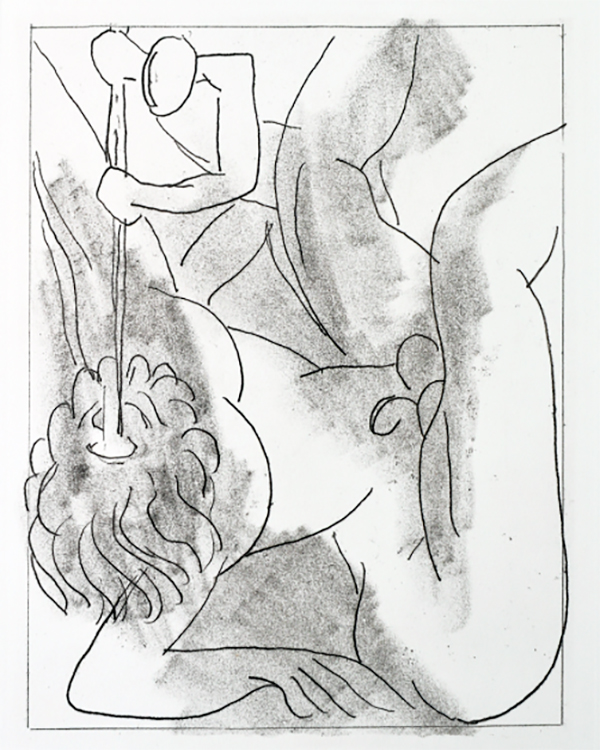
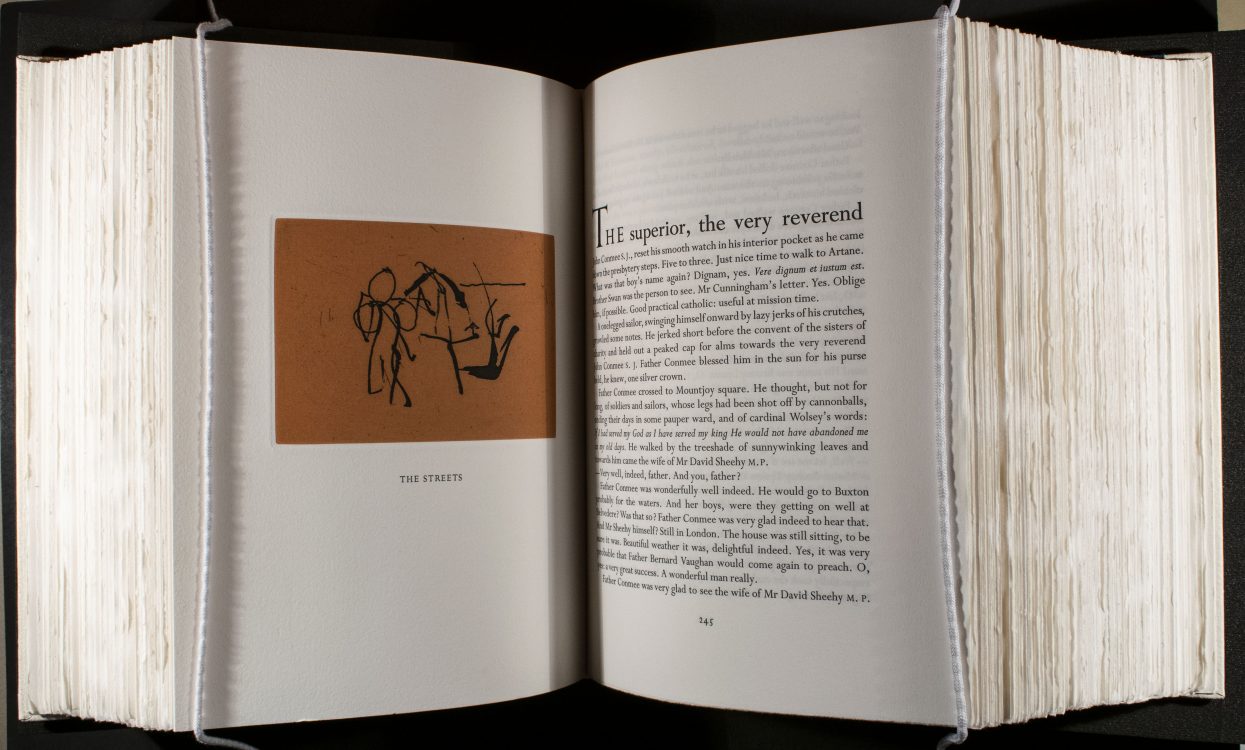
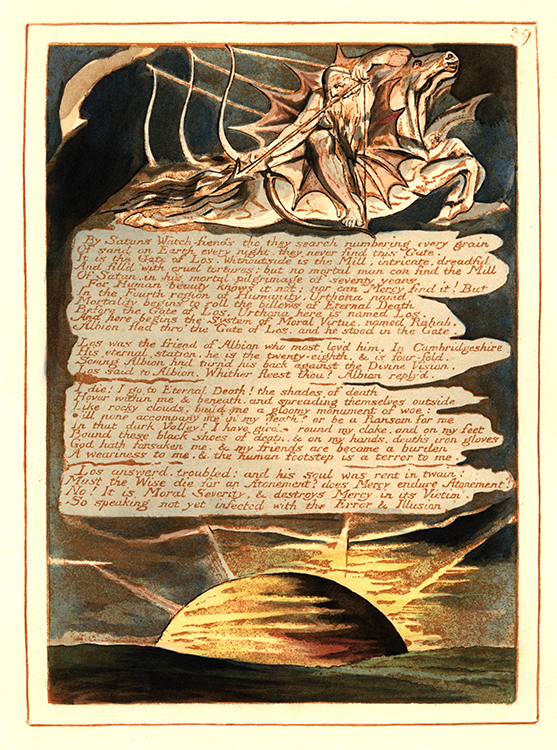
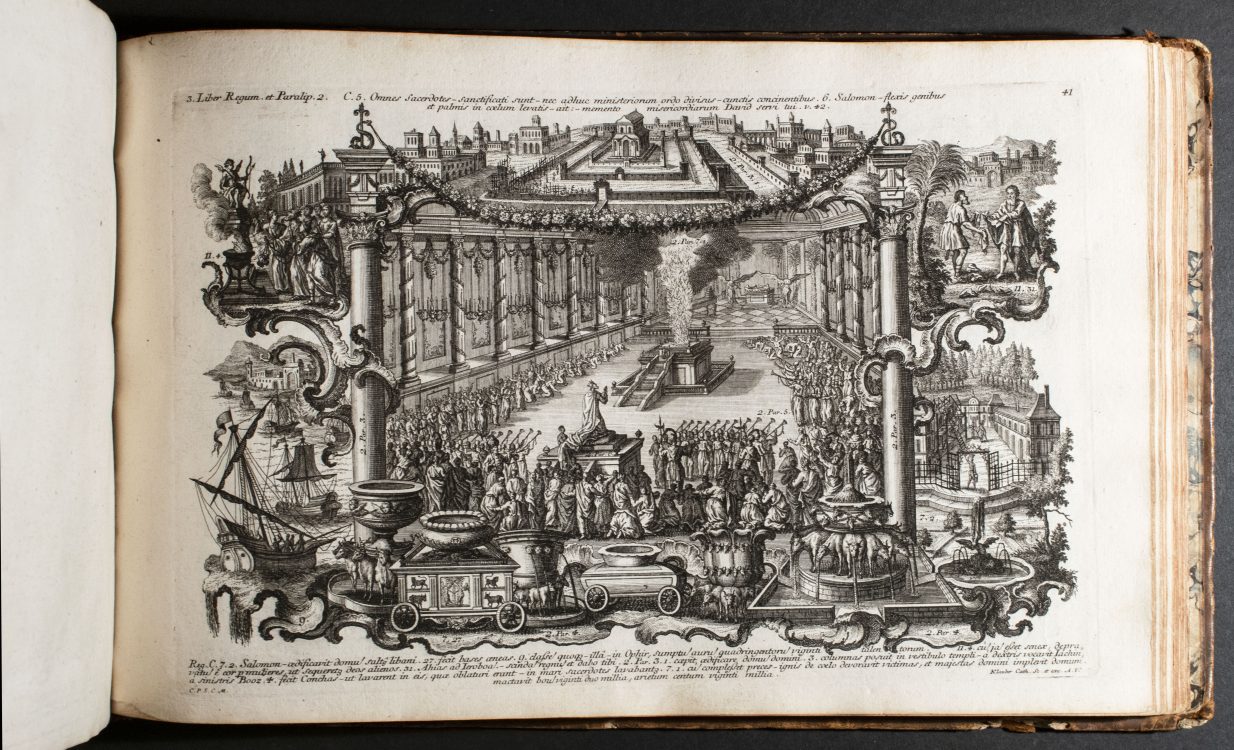


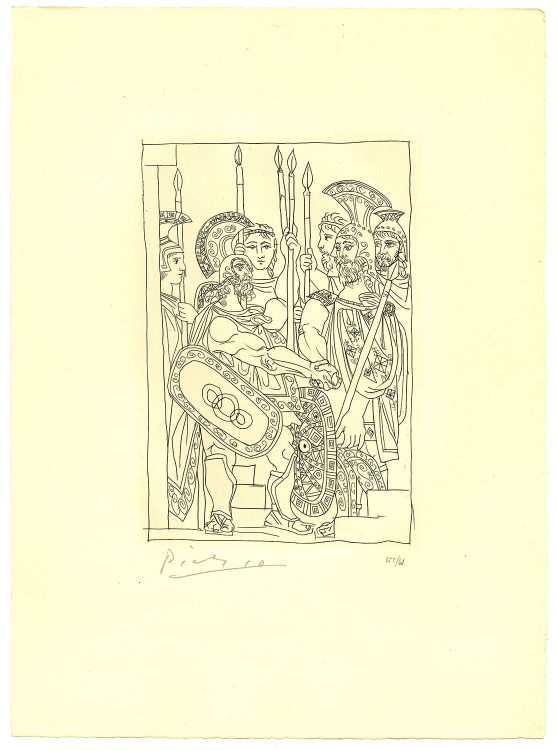
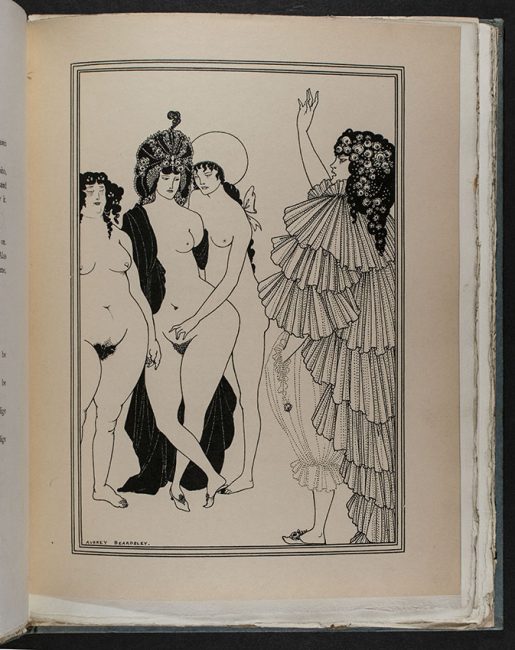
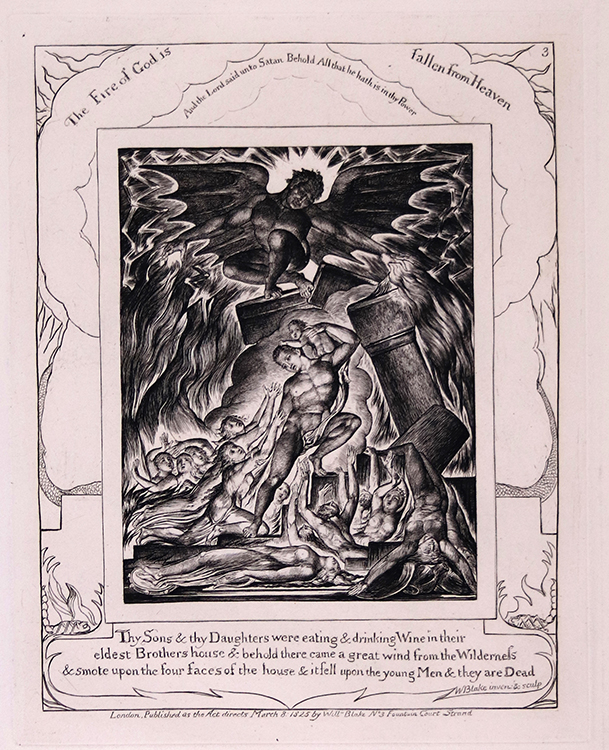
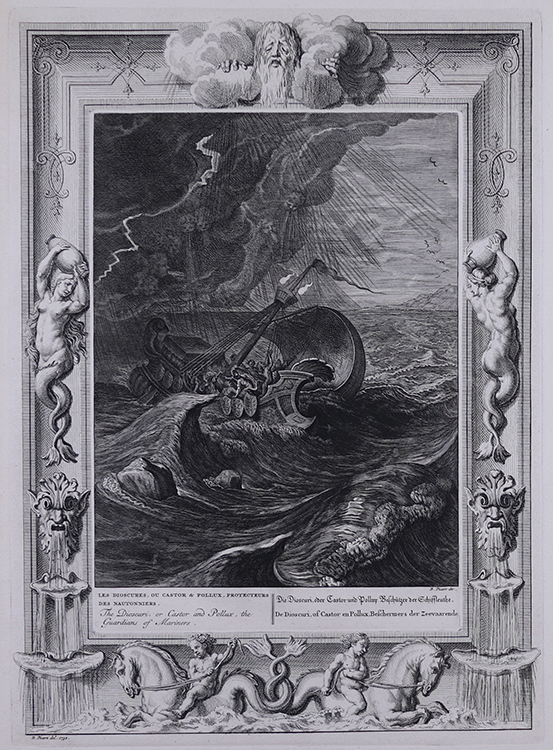
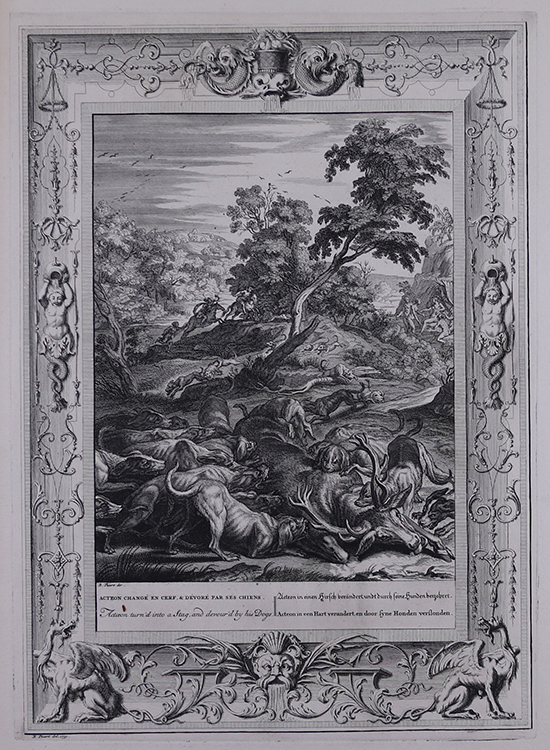
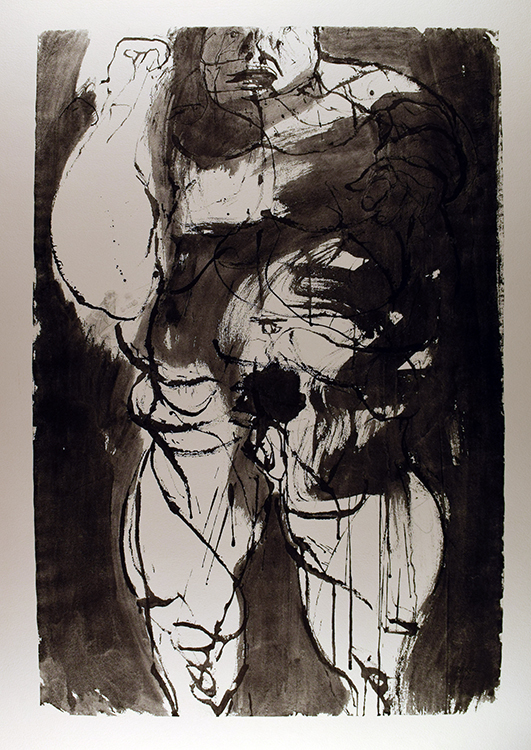
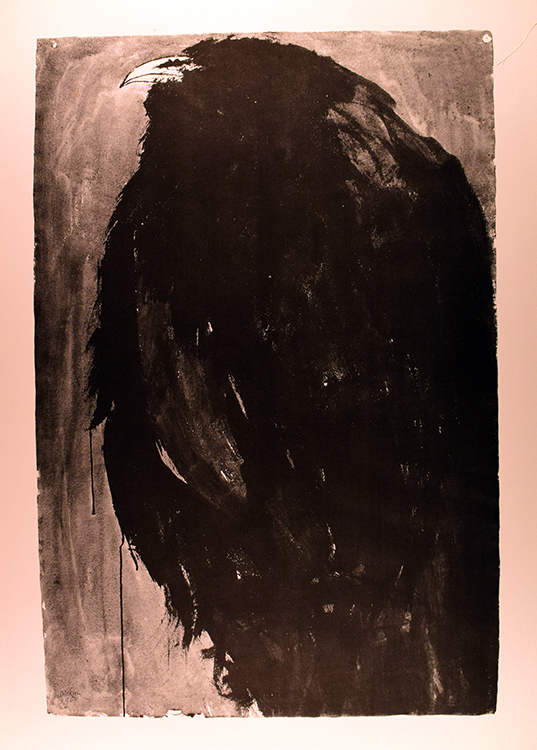

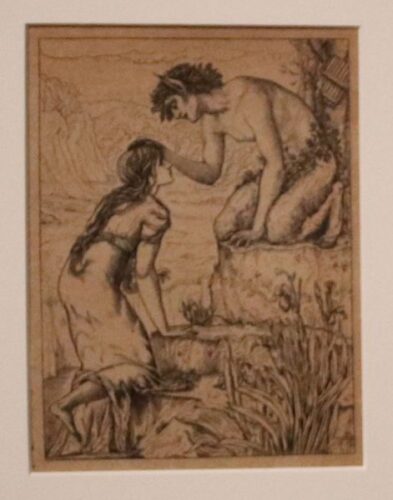
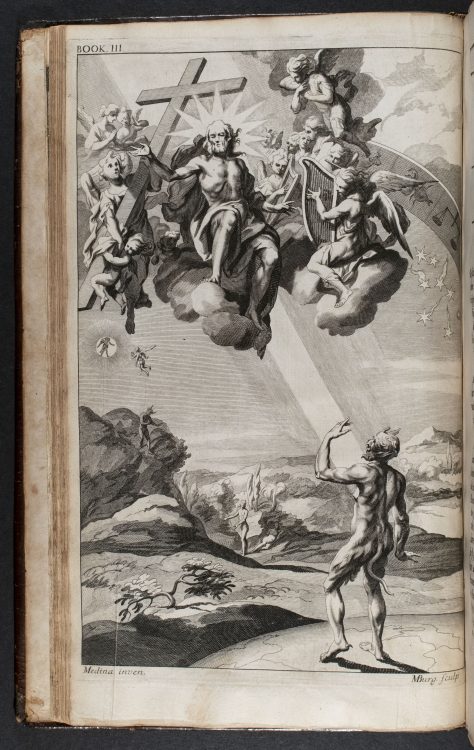

![[Moral schema] from Pvrgatorio, E’l Paradiso. Venice: House of Aldus & Asulanus, 1515. [Moral schema] from Pvrgatorio, E’l Paradiso. Venice: House of Aldus & Asulanus, 1515.](https://exhibitions.lib.udel.edu/drawing-connections/wp-content/uploads/sites/65/2020/11/dante-stitch.jpg)
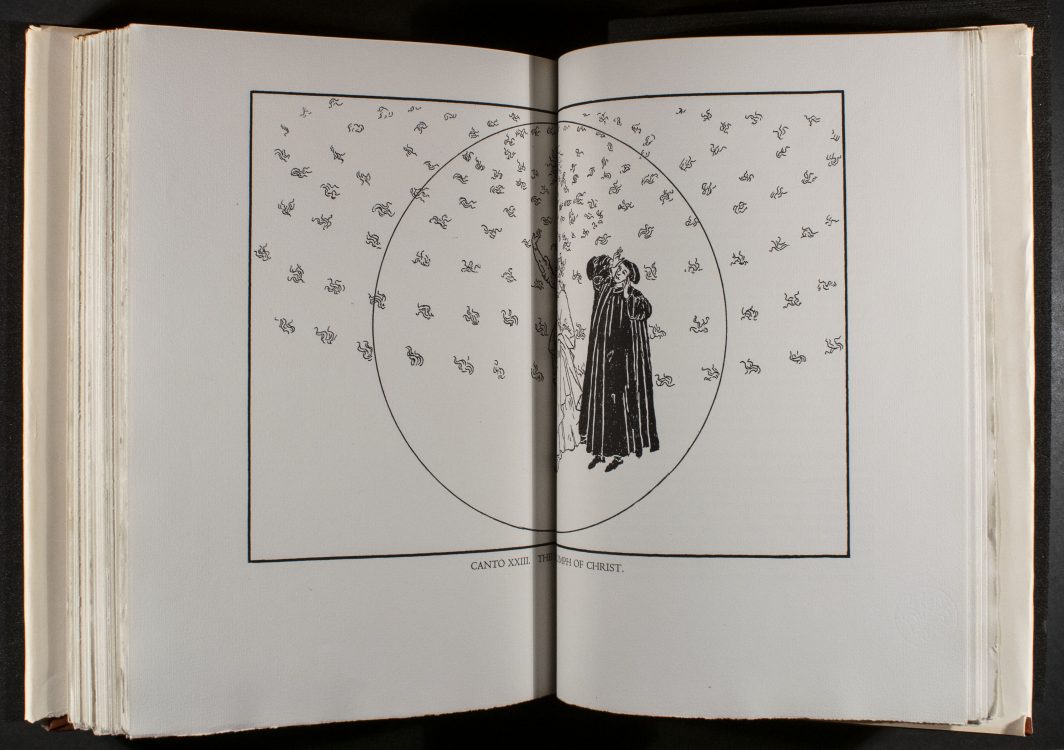
![[Malebolge/ Malcavities] [Malebolge/ Malcavities]](https://exhibitions.lib.udel.edu/drawing-connections/wp-content/uploads/sites/65/2020/02/phillips_dantes_inferno-e1582056347675.jpg)

